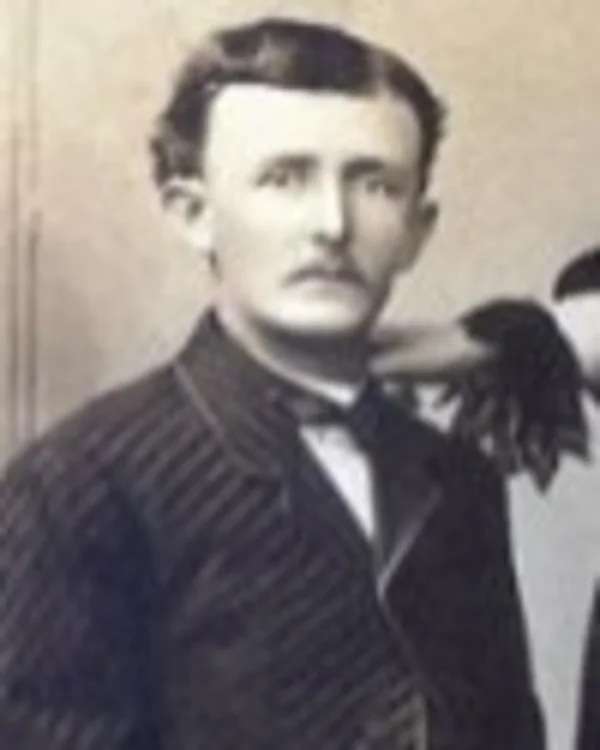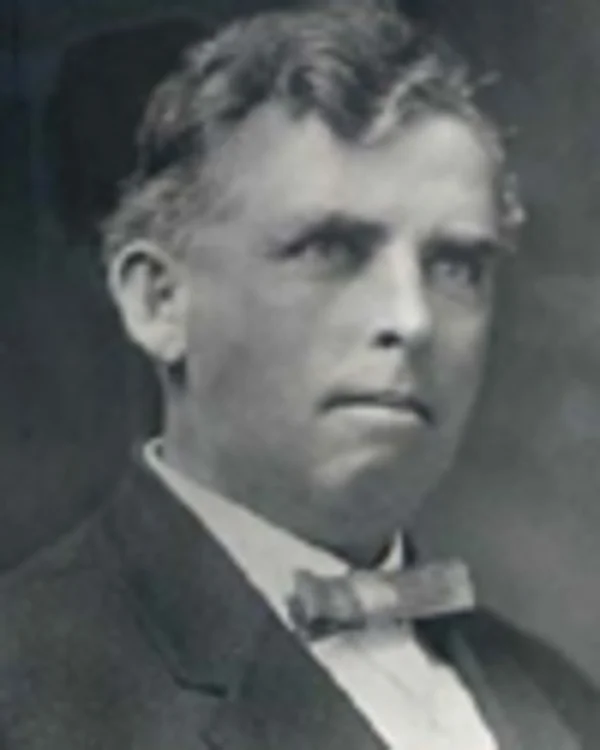![]()
By Tracy Gupton
Fourteen years had passed since a Brazoria County lawman had been killed in the line of duty. It was January 15, 2025, when Brazoria County Sheriff’s Deputy Jesus “Jesse” Vargas was fatally shot in the head in the parking lot of a strip center in Houston. His killer, Robert Lee Davis, enters the history books with the likes of Steve Hayes, Ransom O’Neill, Charles Tunstall and Oscar Beasley who “were dealt with,” without the waste of taxpayers’ dollars feeding and housing them for months, if not years, before proper sentencing for their crimes in a court of law.
Deputy Vargas died at the scene on Stella Link Road inside the South Loop in Houston on that sad day earlier this year. On Thursday, April 24th, at 6 p.m. the Brazoria County 100 Club hosts its annual Law Enforcement Appreciation Banquet at the Doris Williams Civic Center in Lake Jackson. Nine Brazoria County police officers have been nominated by their departments to be considered for the 2025 100 Club’s Officer of the Year, the highest individual honor given by the organization.
At Thursday night’s event in Lake Jackson, the Brazoria County 100 Club will pay tribute to Deputy Vargas for making the ultimate sacrifice in the line of duty as a police officer. His widow and their three daughters are expected to be in attendance.
Vargas, a 17-year veteran of the Brazoria County Sheriff’s Office, was attempting to serve an arrest warrant on Robert Lee Davis as a member of the U.S. Marshal’s Office Gulf Coast Violent Offender Task Force on January 15th. Jesse Vargas was 41.

Law officers shot and killed Davis as he was shooting at them while attempting to hide in a dumpster near the scene of Deputy Vargas’s killing. “Unknown parties” shot and killed Ransom O’Neill and Charles Tunstall at the county jail in Angleton in mid-January 1903. The two dead men had been implicated in the murder of Brazoria County Attorney Smith in late 1902.
David M. Horton and Ryan Kellus Turner wrote in their book, “Lone Star Justice,” a compilation of vigilantism and lynching in Texas, that Ransom O’Neill had been indicted for assault with intent to murder Henry McKinney in January of 1896. O’Neill was acquitted of that charge in a trial in district court. But in December of 1898, a different grand jury indicted O’Neill for the murder of Melissa Williams. He was accused of delivering the fatal blow to Williams with an ax. Another indictment charged O’Neill with assault with intent to murder Ann Hilliard on August 13, 1899. O’Neill remained a free man throughout the investigations and legal ramifications on these prior charges when he was eventually jailed in Angleton for the September 15, 1902, indictment for the attorney Smith’s murder.
Charles Tunstall, the other prisoner shot to death in the jail with O’Neill, was jointly indicted with Walker Tunstall by another Brazoria County grand jury for the May 24, 1896, murder with malice of Louis Diggs by shooting him with a pistol. Former Angleton Times managing editor Marie Beth Jones wrote in her 2009 book, “Trials and Tribulations: Early Texas Crime Stories,” “If the identity of the persons who shot the two prisoners was ever made known, the records give no indication of it, and no charges were filed in their murders” inthe county jail.
Jones, who was a feature columnist for The Facts newspaper until her recent passing, also wrote about Steve Hayes in her book of Brazoria County crime stories. Hayes was a brother-in-law of escaped Brazoria County Jail prisoner Charley Delaney. On February 13, 1909, Delaney was alleged to have murdered his teenaged son and assaulted the dead boy’s mother at Sandy Point in Brazoria County.
“Although the original crime was shocking and brutal, the aftermath was even worse, touching off days of violence that rocked the entire county and made headlines in newspapers not only in Brazoria County, Houston and Galveston, but also in publications throughout the United States,” Marie Beth Jones wrote in “Trials and Tribulations.”
Charles Delaney’s murder trial was set for February 22, 1909, and on February 28th at 3:30 p.m. the jury returned a guilty verdict, sentencing Delaney to life in prison. He was found guilty of murdering the 15-year-old son of a woman Delaney was allegedly beating. The teenager heard his mother screaming for help, ran into the house at Sandy Point where Charles Delaney “hit him on the left side of the head with an axe,” Jones wrote. “The blow split the youth’s skull and the ax blade struck his brain.”
While awaiting transfer to Huntsville in the Angleton jail, Charles Delaney and another prisoner, Otto Cooper, escaped, “setting off a series of grisly events that would involve many other people,” Jones wrote.

Brazoria County Sheriff F.M. Gibson immediately began the search for the two escaped prisoners, “and within hours the search developed into the most intense manhunt in the county’s history, eventually leading to nine deaths,” Jones wrote in her 2009 book.
A September 17, 1909, front page story in The Angleton Times revealed that jailer Ernest Barbee opened the jail door to let a prisoner out to do janitorial work. But that inmate attacked Barbee and began choking him while Delaney and Cooper escaped. The three of them placed Barbee in the jail cell and locked him in, stealing a rifle, shotgun and ammunition. The Times story said that the escaped prisoners stole a surrey and headed out of Angleton toward Oyster Creek. Jesse Graydon was the third man who escaped with Delaney and Cooper. Graydon was soon recaptured, found hiding in a brushy area near the jail while Delaney and Cooper managed to elude capture.
Chenango rancher J.T. “Tut” Harden was informed by authorities that the two escapees were expected to be headed in the direction of Chenango, which was along the railroad tracks north of Angleton. So, Harden “stationed himself at the box car that is used as a depot at Chenango, where he waited for the escapees’ arrival,” Jones wrote. “About 11 o’clock at night [they] came up the track. Just as they had passed him he called for them to halt. Instead of doing as commanded they turned upon Mr. Harden and shot, both with shotgun and Winchester. The rifle ball struck Mr. Harden in the breast and inflicted a fatal wound from which he died at 7:09 o’clock Monday morning a few minutes after a special train had arrived from Houston with Dr. Boyd on board.” The escape from the county jail had occurred on a Sunday night when few people were around the Brazoria County Courthouse.
Later Monday morning word of Harden’s death spread throughout the area, Jones wrote, and many men arrived to join the search for the escapees. “Dogs were obtained from nearby state prison farms to aid in the manhunt.” Sheriff Gibson and his posse pursued Delaney and Cooper to the Sandy Point area where the mounted lawmen surrounded the home of Steve Hayes, who was Delaney’s brother-in-law.
A front page story in the September 16, 1909, Galveston Daily News revealed that posse member Hillen Armour Munson of Bailey’s Prairie was mortally wounded when shots fired from inside Hayes’ house struck him and another rifle shot killed the horse from under Deputy Sheriff J.C. Willis of Bay City. “Suddenly and unexpectedly a window on hinges opened and the barrels of a shotgun were thrust out through the opening,” the Galveston Daily News story stated. “A second thereafter a flash was seen (by the mounted lawmen outside the Hayes house), which was followed by a loud report … Mr. H.A. Munson wheeled his horse around as if he was going to retreat, and after riding about fifteen feet in an opposite direction … fell from his horse and died instantly from the effects of a heavy charge of buckshot which had struck him in the breast.”
According to an Angleton Times story about the event, “Munson and his party rode up to the house where Hayes and some … women and children were sitting on the gallery. Munson and Hayes knew one another well, and Munson called asking Hayes to come out, saying they were not going to hurt him, but wanted to ask him some questions.” The newspaper from the county seat went on to write, “The shooting was wholly unexpected. Instead of going out to the … men (Hayes) dodged quickly into the house, and in an instant a gun was pointed out of a window, there was a report, and Mr. Munson received a charge of buckshot full in the face. He rode away a few rods, dismounted, sat down upon the ground and died in a few minutes, having never spoken.”
The Times story went on to say that Hayes escaped out a back door and reached a brushy area where Sheriff Gibson’s posse began pursuing him. “Munson was killed by a shotgun blast and Willis’s horse by a rifle shot, leading those outside to believe that Delaney was in the house, and that Hayes was trying to protect him.”
The 46-year-old Munson, who was descended from one of Brazoria County’s prominent pioneer families, was married and had three children like Deputy Jesse Vargas. Armour Munson also left five brothers and two sisters. Jones’ book about the 1909 incident states, “When Munson’s fate became known, ranchers and stockmen from several counties began gathering, swelling the number to an estimated 500 at one time, as the search centered at Sandy Point and plantations in the bottom lands along Oyster Creek and the Brazos River. For the next several days, men were stationed along the railroad tracks, keeping watch for the escapees.”
Steve Hayes was eventually captured when Sheriff Gibson and a large group of volunteers totaling between 75 and 100 men flushed Armour Munson’s alleged killer out of a thicket but neither Delaney nor Cooper was located during this manhunt. Jones writes in her book that Hayes shot Joe Nunn in the neck, killing him instantly, and retreated. When a deputy ordered Hayes to stop, “he raised his gun instead,” Jones wrote. “The deputy fired first, killing Hayes.”
Delaney was arrested several days later when officers took him into custody after finding him hiding under a bed in a home one of Delaney’s relatives tipped the police off about where the jail escapee was hiding out. Jones writes that Delaney was later tried and sent to prison. “Cooper reportedly fled the county by hopping a freight train,” the former Facts columnist wrote in her book. “Even though he had not been caught, the Brazoria County Grand Jury indicted him on February 23, 1910, on a charge of having murdered Harden” in Chenango. Cooper was never located and brought to justice. In his dying hours, Tut Harden said that Cooper was the one who shot him.

Former Brazoria County Sheriff Joe Snow met the same fate as special deputy Armour Munson eleven years earlier when a shotgun blast at short range took the life of the West Columbia native on Wednesday, September 15, 1920. Early in his second term as Brazoria County’s sheriff, Snow, accompanied by a jail trusty named Ed Curtis, was investigating the theft of several horses when he was killed, preceding Deputy Vargas’s murder by 105 years.
Marie Beth Jones also wrote about the incident in 1920 in her book, “Trials and Tribulations.” Joe Snow had been born in West Columbia and had recently completed his first two-year term as the county sheriff and was in the first year of his second term when his life was tragically snuffed out. He was only 47 and left a loving wife, the former Ada Cannan of Angleton, “and a brand new son,” Jones wrote.
Snow’s killer, Oscar Beasley, was only 20 or 21 years old in 1920. He “was a lifetime resident of the county, having been reared on lower Oyster Creek around Phair and Demijohn Island. Although he had been charged with several previous crimes, including the theft of cowhides and other relatively minor offenses, no one who knew him would have believed him capable of cold-blooded murder,” Jones wrote about Sheriff Snow’s murderer.
Sheriff Snow and the trusty Ed Curtis rode horses up to a fishing camp on the bay front south of Stratton Ridge in southern Brazoria County, Jones wrote in her book, “to investigate the burning of a camp that some Angleton residents had built as a fishing lodge. While in the area, the sheriff stopped at a shack usually occupied by two commercial fishermen. There, to his surprise, he had discovered his own saddle, which had been stolen from his home place three months earlier.
“Nearby were three horses he also believed to have been stolen. Snow retrieved the saddle” and, through further investigation began to suspect Beasley had stolen the horses and the sheriff’s saddle. Jones wrote in her book that Sheriff Snow eventually came upon Oscar Beasley riding a horse amidst heavy smoke from a prairie fire and both Snow and Ed Curtis pursued the horse thief. “The chase continued for several hours before Snow raised his binoculars to his eyes again and spotted Beasley dismounting and entering the fishing shack, still far ahead of his pursuers.”
Jones writes in her book that the sheriff instructed the jail trusty to ride his horse around the back side of the shack to prevent Beasley from escaping in that direction. “The sheriff, who was carrying a rifle, went to the front, reaching a point within a few feet of the shack when Beasley, who was still inside, fired his shotgun at Snow at close range. The roar of the shotgun, almost deafening in that quiet spot, frightened the trusty, who rode away at top speed.”
Curtis rode to an oil rig at Stratton Ridge and informed workers on the rig that Sheriff Snow had been killed. Word reached Angleton about 10:45 that night and the jail trusty led a small group of men to the fishing camp where Joe Snow’s body was retrieved. “They returned to Angleton with the slain sheriff’s remains about 5 a.m.,” Jones wrote, “some 12 hours after Snow had been shot.”
The story of the Brazoria County sheriff’s murder in the September 16, 1920, issue of The Angleton Times revealed that Beasley was eventually apprehended at the train depot in Danbury by George Seibel and Earl McBride and delivered to the jail in Angleton. “His stay there was to be brief,” Jones wrote in her book. “That night ‘unknown’ citizens forcibly removed him from his jail cell and lynched him. His body was left hanging on a tree in front of the jail.”
The headline in The Angleton Times for the story about the sheriff’s killer’s hanging read: “Justice, Swift and Sure, Meted Out to Slayer of Our Lamented Sheriff.”
The closing sentence in the 1920 story in The Times about the lynching read: “Brazoria County people stand for law wherever and whenever they can and for justice all the time.”
The Alvin Sun’s September 17, 1920, issue read: “Sheriff Snow, one of this county’s most popular officials, was instantly killed by a load of buckshot when he attempted to arrest Oscar Beasley about 5 p.m. Wednesday at a shack at a lonely spot on the coast at the mouth of Salt Bayou, about twenty-two miles from Angleton. The left side of the officer’s face was torn away by the discharge.”
Deputy Vargas, like Armour Munson and Joe Snow, was shot in the head. The killers of these Brazoria County lawmen all met rapid justice, Steve Hayes and Robert Lee Davis shot to death by police officers defending themselves from gunfire aimed at them by the cop killers, while Oscar Beasley’s demise can be chalked up to old fashioned frontier justice.
The September 17, 1920 Alvin Sun story summed it up: “An orderly crowd of several hundred persons descended upon the jail at Angleton Thursday at about 5:30 p.m., where [he] was confined following his capture at Danbury in the early morning, overpowered [the deputy at the jail], and dragging [Beasley] from his cell, hung him to a convenient tree within the shadow of the jail walls. The body was still hanging there Thursday night.”
Sadly, these three incidents of Brazoria County lawmen meeting brutal ends to their lives, are not the only ones. On Thursday, April 24, 2025, the 100 Club of Brazoria County will host its Law Enforcement Appreciation Banquet in Lake Jackson where Deputy Jesus “Jesse” Vargas will be honored for making the ultimate sacrifice in the line of duty this past January. The organization was created to respond when tragedy hits and the wives, husbands, children, parents and siblings of fallen police officers are left not knowing how to move forward in their lives without the loved one who wore the badge and died for having done so.
Sheriff Joe Snow was honored almost 50 years after his murder when an official Texas Historical Grave Marker was dedicated near his burial site in Angleton. The writing on the historical marker reads: “Sheriff Joe H. Snow (1872-1920) Born in West Columbia, Texas. Married; had one son. Served as Justice of the Peace, Precinct 2, 1900-1912. Was appointed deputy sheriff of Brazoria County in 1913; elected sheriff in 1918; re-elected for an additional 2-year term. Was killed in line of duty after long horseback chase to arrest a suspected horse thief. A brave, conscientious officer, who sacrificed his life in his service to the public. Recorded, 1967.”
Sheriff Snow, whose wife was at the Angleton Sanitarium with her five-day old son when her husband was murdered, is also one of Brazoria County’s fallen law enforcement officers honored at the memorial placed in front of the sheriff’s department complex north of Angleton, as well as on a memorial in Austin that commemorates the deeds of fallen police officers from throughout the great state of Texas.
